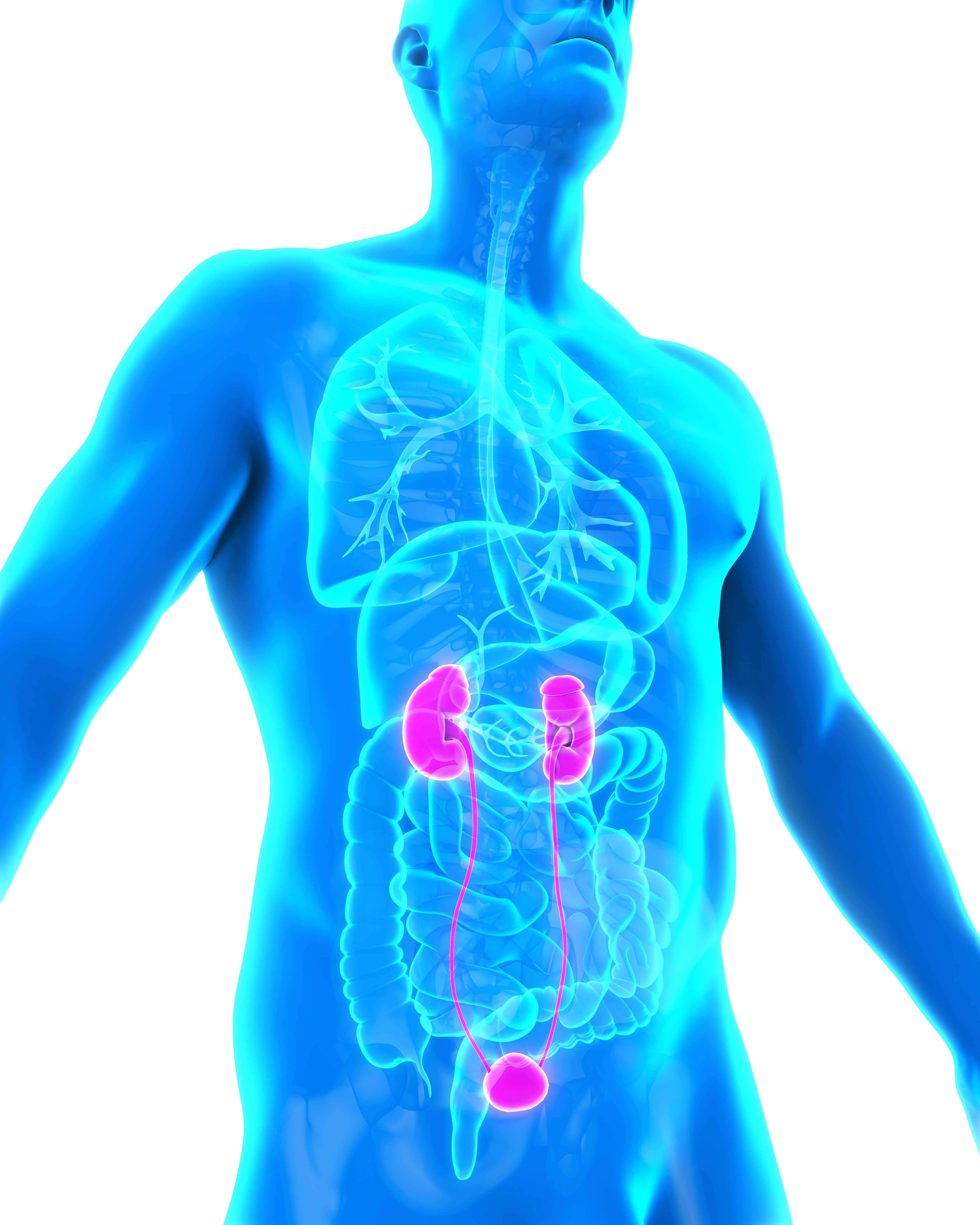Intravesical Mitomycin Produces Enduring Efficacy Across NMIBC Trials
Data support the intravesical mitomycin solution’s role as an innovative option for those with recurrent, low-grade, intermediate-risk NMIBC.
"With an acceptable safety profile manageable in routine urologic practice, [mitomycin] is administered in an outpatient setting without the need for general anesthesia. This review article highlights the clinical evidence supporting [mitomycin’s] role as an innovative option for patients with recurrent LG-IR-NMIBC," according to study author Sandip M. Prasad, MD, MPhil.

The intravesical mitomycin solution (Zusduri; formerly UGN-102) elicited durable responses and manageable safety across multiple populations of patients with recurrent, low-grade, intermediate-risk non–muscle-invasive bladder cancer (LG-IR-NMIBC), according to findings from a review article published in Reviews in Urology.1
Authors of the review article compiled data from 3 studies assessing treatment with the mitomycin solution: the phase 2b OPTIMA II trial (NCT03558503), the phase 3 ATLAS trial (NCT04688931), and the phase 3 ENVISION trial (NCT05243550).2-4
“[The mitomycin solution] is an FDA-approved, non-surgical treatment that has consistently demonstrated robust, clinically significant, and durable complete responses [CRs] in patients with recurrent LG-IR-NMIBC,” lead study author Sandip M. Prasad, MD, MPhil, director of Genitourinary Surgical Oncology and Vice Chair of Urology at Morristown Medical Center/Atlantic Health System, NJ, stated in a press release on these findings.5 “With an acceptable safety profile manageable in routine urologic practice, [mitomycin] is administered in an outpatient setting without the need for general anesthesia. This review article highlights the clinical evidence supporting [mitomycin’s] role as an innovative option for patients with recurrent LG-IR-NMIBC.”
OPTIMA II Trial
Data from OPTIMA II showed a 3-month CR rate of 65.1% (95% CI, 52.0%-76.7%). Additionally, the median duration of response (DOR) was not reached (NR) at the 12-month cutoff, although the estimated probability of a sustained response at 9 months after CR was 69.9% (95% CI, 51.8%-82.3%).
In a 5-year follow-up analysis including 41 patients with a CR in the parent study, the median estimated DOR was 24.2 months (95% CI, 9.7-42.1) after a median follow-up of 35.8 months (95% CI, 10.8-61.0). After a median follow-up of 50.4 months (95% CI, 27.0-not estimable [NE]) among 17 patients with long-term follow-up data, the median DOR was 42.1 months (95% CI, 24.2-NE).
Investigators reported that treatment-emergent adverse effects (TEAEs) typically showed mild or moderate severity. Common TEAEs in this population included dysuria (41.3%), pollakiuria (20.6%), and hematuria (15.9%).
In the open-label phase 2b OPTIMA II trial, 63 patients with LG-IR-NMIBC received at least 1 instillation of mitomycin. The trial’s primary end point was the CR rate. A key secondary end point was durable CRs in patients who achieved a CR at the 3-month visit.
ATLAS Trial
Of 396 patients screened for the ATLAS trial, 142 received mitomycin with or without transurethral resection of bladder tumor (TURBT), and 140 underwent TURBT alone. Three-month CRs were observed in 64.8% (95% CI, 56.3%-72.6%) who received mitomycin at baseline and 62.1% (95% CI, 53.6%-70.2%) who received TURBT at baseline. Furthermore, the estimated 12-month DOR rates after CR were 79.6% (95% CI, 69.3%-86.8%) in the mitomycin arm and 69.6% (95% CI, 57.6%-78.9%) in the TURBT alone arm; outcomes favored the mitomycin arm (HR, 0.49; 95% CI, 0.26-0.93).
TEAEs occurred in 75.4% of the mitomycin arm and 47.7% in the TURBT alone arm. In each respective arm, the most common TEAEs included dysuria (30.4% vs 4.5%), nocturia (18.1% vs 6.8%), and micturition urgency (18.1% vs 7.6%).
The primary end point of the ATLAS trial was disease-free survival. Secondary end points included the CR rate and DOR.
ENVISION Trial
Findings from the ongoing, prospective ENVISION trial showed that among 240 patients who received at least 1 instillation of mitomycin, 79.6% (95% CI, 73.9%-84.5%) achieved a CR at 3 months. Among those with a response, the probability of disease-free status at 12 months was 82.3% (95% CI, 75.9%-87.1%). After a median follow-up of 13.9 months, the median DOR was NE at the time of analysis.
Overall, 57.1% of the population experienced TEAEs. The most common TEAEs in this trial included dysuria (22.5%), hematuria (8.3%), and urinary tract infections (7.1%).
The primary end point of the ENVISION trial was the 3-month CR rate. Secondary end points included DOR among those with a CR at 3 months.
The FDA previously approved the mitomycin solution for patients with LG-IR-NMIBC in June 2025 based on findings from the ENVISION trial.6
References
- Prasad SM, Schoenberg M, Louie MJ, et al. Review of UGN-102: a reverse thermal gel containing mitomycin for the treatment of recurrent, low-grade, intermediate-risk non–muscle-invasive bladder cancer. Rev Urol. 2025;24(3):exxx.
- Chevli KK, Shore ND, Trainer A, et al. Primary chemoablation of low-grade intermediate-risk nonmuscle-invasive bladder cancer using UGN-102, a mitomycin-containing reverse thermal gel (Optima II): a phase 2b, open-label, single-arm trial. J Urol. 2022;207(1):61-69. doi:10.1097/JU.0000000000002186
- Prasad SM, Huang WC, Shore ND, et al. Treatment of low-grade intermediate-risk nonmuscle-invasive bladder cancer with UGN-102 ± transurethral resection of bladder tumor compared to transurethral resection of bladder tumor monotherapy: a randomized, controlled, phase 3 trial (ATLAS). J Urol. 2023;210(4):619-629. doi:10.1097/JU.0000000000003645
- Prasad SM, Shishkov D, Mihaylov NV, et al. Primary chemoablation of recurrent low-grade intermediate-risk nonmuscle-invasive bladder cancer with UGN-102: a single-arm, open-label, phase 3 trial (ENVISION). J Urol. 2025;213(2):205-216. doi:10.1097/JU.0000000000004296
- ZUSDURI™ clinical review published in Reviews in Urology™ highlights durable efficacy and manageable safety profile in recurrent low-grade, intermediate-risk non–muscle invasive bladder cancer. News release. UroGen Pharma Ltd. October 2, 2025. Accessed October 3, 2025. https://tinyurl.com/ynxajy3s
- FDA approves mitomycin intravesical solution for recurrent low-grade intermediate-risk non-muscle invasive bladder cancer. News release. FDA. June 12, 2025. Accessed October 3, 2025. https://tinyurl.com/m8xj5pbd